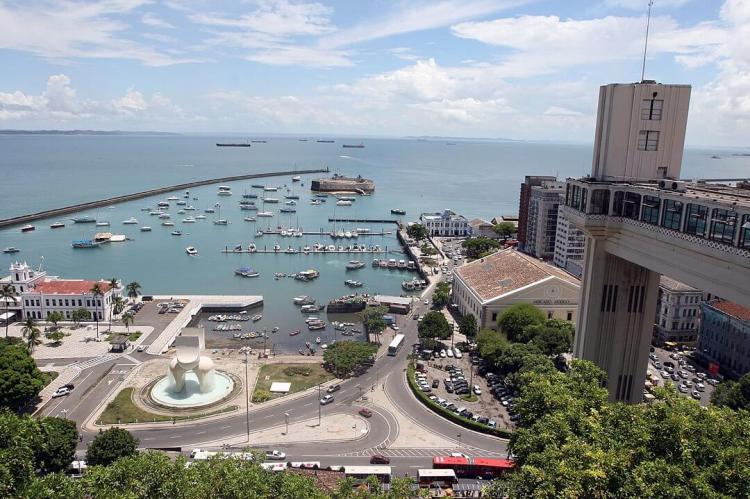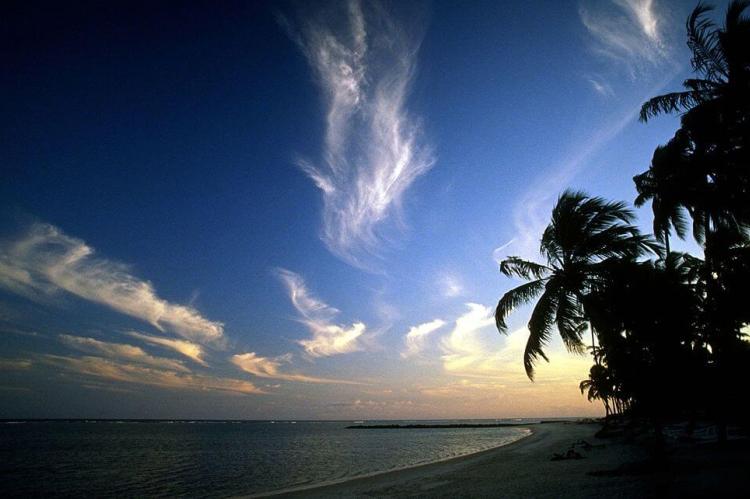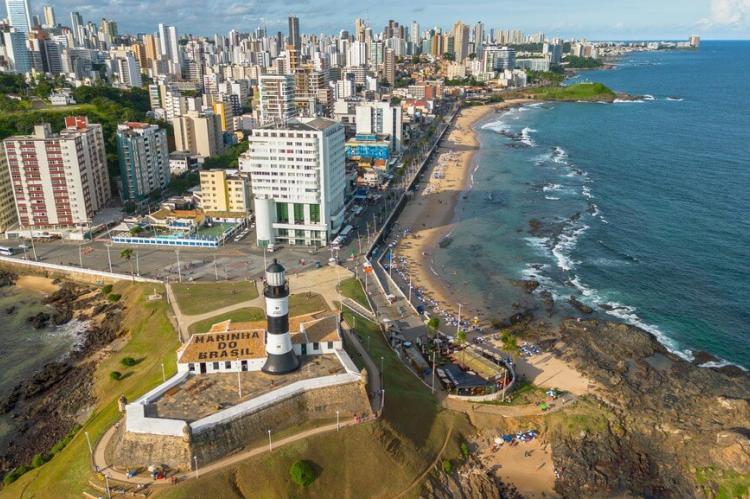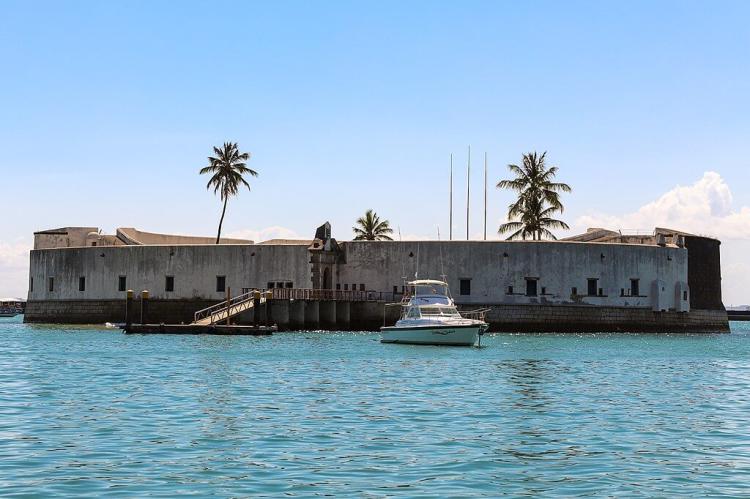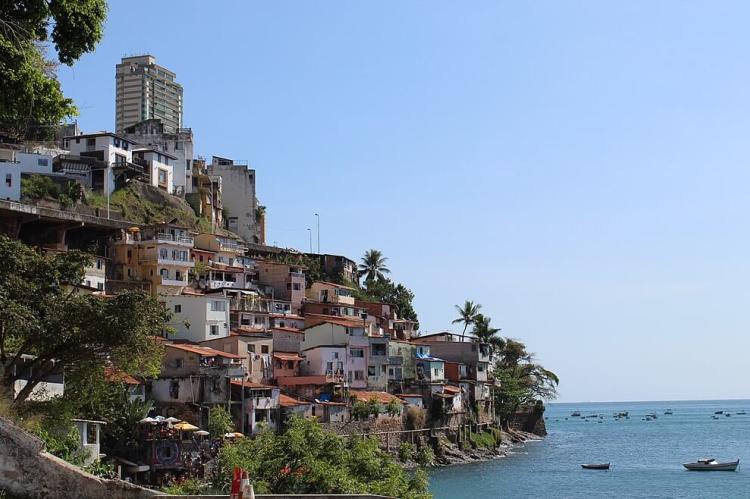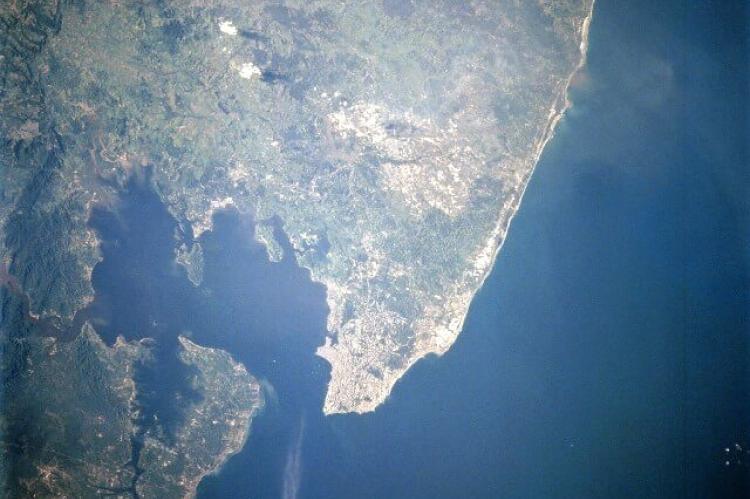Bahia's Treasure: The Wonders of Todos os Santos Bay
Along Brazil's eastern coast, Todos os Santos Bay is a captivating natural harbor that has played a pivotal role in the region's history and development. As the largest bay in Brazil, it envelops the vibrant city of Salvador de Bahia. It serves as both a geographical landmark and a cultural icon.
Todos os Santos Bay: The Heart of Bahia's Cultural and Ecological Richness
Nestled along Brazil's eastern coast, Todos os Santos Bay, also known as All Saints Bay, is a captivating natural harbor that has played a pivotal role in the history and development of the region. As the largest bay in Brazil, it envelops the vibrant city of Salvador de Bahia, the capital of the state of Bahia. It serves as both a geographical landmark and a cultural icon. With its deep historical roots and rich ecological diversity, this expansive bay continues to be a central feature of Bahia's coastal landscape.
Geographical and Ecological Overview
Todos os Santos Bay stretches approximately 40 kilometers (25 miles) in length and 32 kilometers (20 miles) in width, covering a vast area of 1,223 square kilometers (472 square miles). It is bordered by the fertile coastal lowlands known as the Recôncavo, which have historically supported agriculture and settlement. Though shallow in many areas with an average depth of 9.8 meters (32 feet), the bay's waters are dotted with 91 islands, the most notable of which is Itaparica Island, positioned at the bay's entrance. Other significant islands include Ilha dos Frades, Ilha de Maré, Ilha de Bom Jesus, and the small yet intriguing Ilha do Medo.
The bay's diverse ecosystems include mangroves, estuaries, and coral reefs, each contributing to the area's rich biodiversity. The Paraguaçu River, one of Bahia's principal rivers, empties into the bay, bringing nutrients that support a variety of marine and coastal life. The bay's ecological importance is matched by its role as a vital economic and cultural hub.
The marine ecosystems of Todos os Santos Bay are especially noteworthy. The shallow waters host an array of marine species, from vibrant coral reefs to diverse fish populations. Mangroves line much of the bay's coastline, serving as crucial nurseries for fish and other marine life while also protecting the shorelines from erosion. The interplay between the freshwater influx from the Paraguaçu River and the salty Atlantic waters creates a unique brackish environment supporting various organisms. The bay's islands further enhance its ecological richness, with each island harboring its own unique flora and fauna, adding layers of biodiversity to the region.
Historical Significance
The history of Todos os Santos Bay is deeply intertwined with the history of Salvador de Bahia and the broader region of Brazil. The bay was named by the Italian explorer Amerigo Vespucci, who reportedly entered its waters on All Saints' Day, November 1, 1501, during his second expedition to the Americas. This event marked the beginning of European influence in the area, which would grow significantly over the following centuries.
Salvador de Bahia, founded in 1549 on the bay's shores, became the first capital of Brazil and a key port in the transatlantic slave trade. By the early 18th century, the bay was a major entry point for enslaved Africans, who were brought to work on the sugar plantations in the surrounding Recôncavo region. This influx of enslaved peoples significantly shaped the cultural and demographic landscape of Salvador, making it a center of Afro-Brazilian culture that persists to this day.
The bay also played a role in Brazil's whaling industry, which thrived in the 18th and 19th centuries. Whales were attracted to the bay's warm waters, which served as a mating ground. While the whaling industry has long since disappeared, the bay's historical significance remains a point of pride for the people of Bahia.
Todos os Santos Bay became a key strategic and economic asset for the Portuguese crown as the colonial era progressed. The bay's natural harbor made Salvador a vital port for the export of sugar, tobacco, and other goods produced in the fertile Recôncavo region. Salvador quickly grew into one of the most important cities in the Portuguese Empire, serving as a gateway between Brazil and the rest of the world. The city's prominence is reflected in its colonial architecture, including grand churches, forts, and public buildings that still remain today as reminders of the bay's illustrious past.
Economic Importance
Today, Todos os Santos Bay remains a vital economic resource for Bahia. The northeastern shore of the bay is home to Brazil's first producing oil field, and the municipality of São Francisco do Conde continues to serve as a port for the oil refineries at Mataripe. The bay's basin is regularly dredged to keep the harbor open for shipping, maintaining its status as a key logistical hub.
The bay's economic significance extends beyond its role in the oil industry. The surrounding regions benefit from fishing, tourism, and agriculture, all of which are sustained by the bay's natural resources. The islands, particularly Itaparica, have become popular tourist destinations, drawing visitors with their pristine beaches, colonial architecture, and relaxed atmosphere. Eco-tourism is also on the rise, with many visitors exploring the bay's rich marine life and enjoying activities such as diving, sailing, and bird watching.
The bay's commercial fishing industry thrives due to the abundance of marine life supported by the bay's diverse ecosystems. Fishermen catch various species of fish, shellfish, and crustaceans, which are sold locally and exported. The bay's coastal communities rely heavily on this industry, which has been a staple of the local economy for generations.
In addition to tourism and fishing, the fertile lands of the Recôncavo region surrounding the bay remain important for agriculture. Sugarcane, once the dominant crop, is still grown alongside other crops such as tobacco, cassava, and tropical fruits. These agricultural activities, combined with the bay's strategic position for shipping and oil production, make Todos os Santos Bay a multifaceted economic engine for the state of Bahia.
Cultural Significance and Legacy
The cultural heritage of Todos os Santos Bay is deeply rooted in the Afro-Brazilian traditions that emerged from blending indigenous, African, and European influences. Salvador de Bahia, often referred to as the cultural heart of Brazil, is renowned for its vibrant music, dance, cuisine, and religious practices, many of which have origins in the communities that formed around the bay. The city's historic Pelourinho district, a UNESCO World Heritage Site, is a testament to this rich cultural legacy, with its cobblestone streets, colorful colonial buildings, and lively festivals.
The bay has also inspired countless works of art, literature, and music. Many Brazilian artists draw on the beauty and history of Todos os Santos Bay as a source of inspiration. The bay's natural and cultural landscapes continue to be celebrated in local festivals, such as the Festa de Iemanjá, which honors the Afro-Brazilian goddess of the sea and attracts thousands of participants each year.
Conclusion
Todos os Santos Bay, with its deep historical roots and vibrant ecological systems, stands as a testament to the enduring significance of Salvador de Bahia and the broader region of Bahia. From its discovery by Amerigo Vespucci to its role in the transatlantic slave trade and its continued economic importance, the bay has been a central feature of Brazil's history and development. Today, it remains a place of great natural beauty and cultural richness, offering a glimpse into the heart of Bahia's coastal heritage. The bay's islands, waters, and surrounding landscapes are not just geographical features; they are living symbols of Brazil's past, present, and future, embodying its people's resilience, diversity, and creativity of its people.
